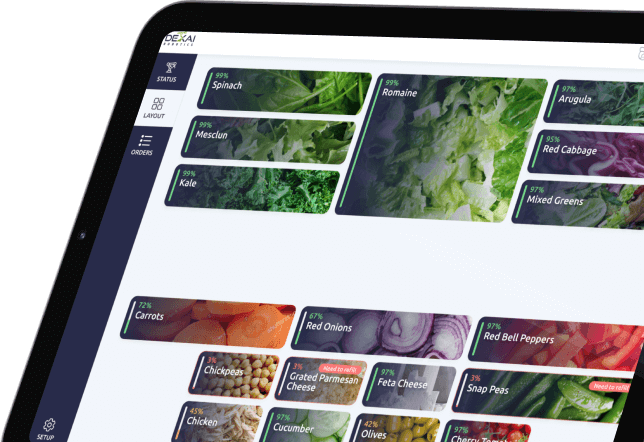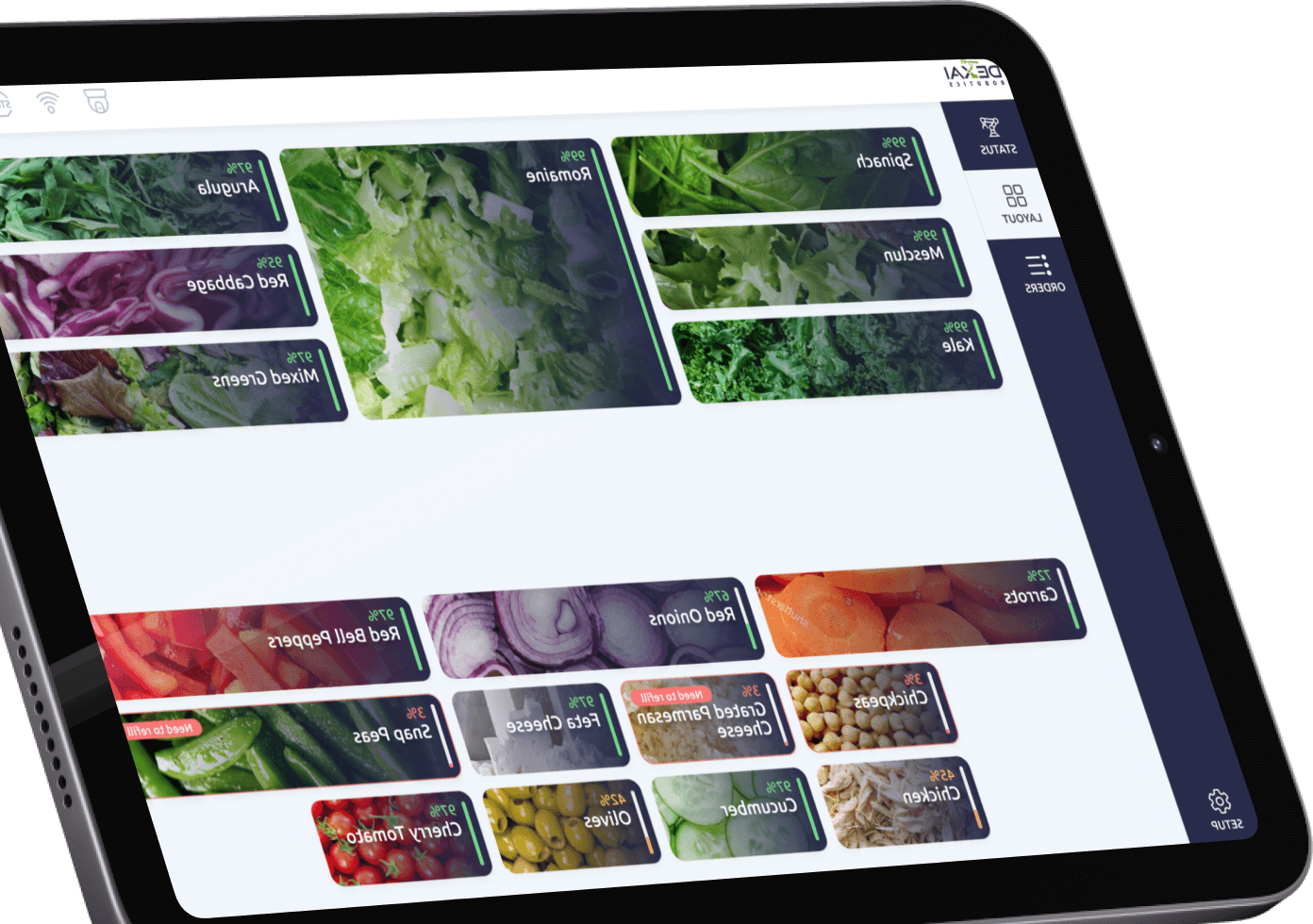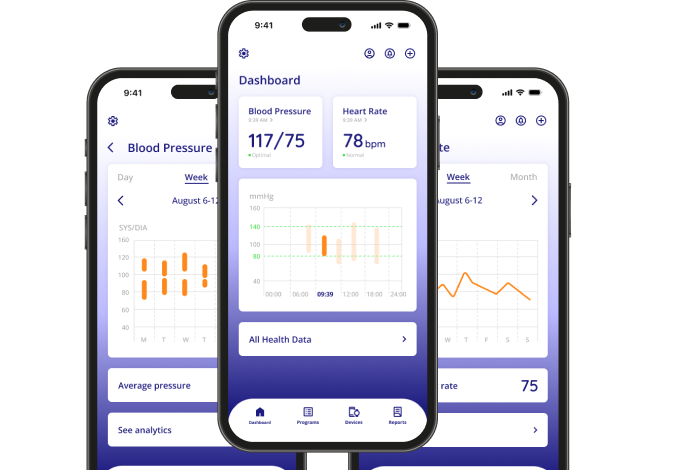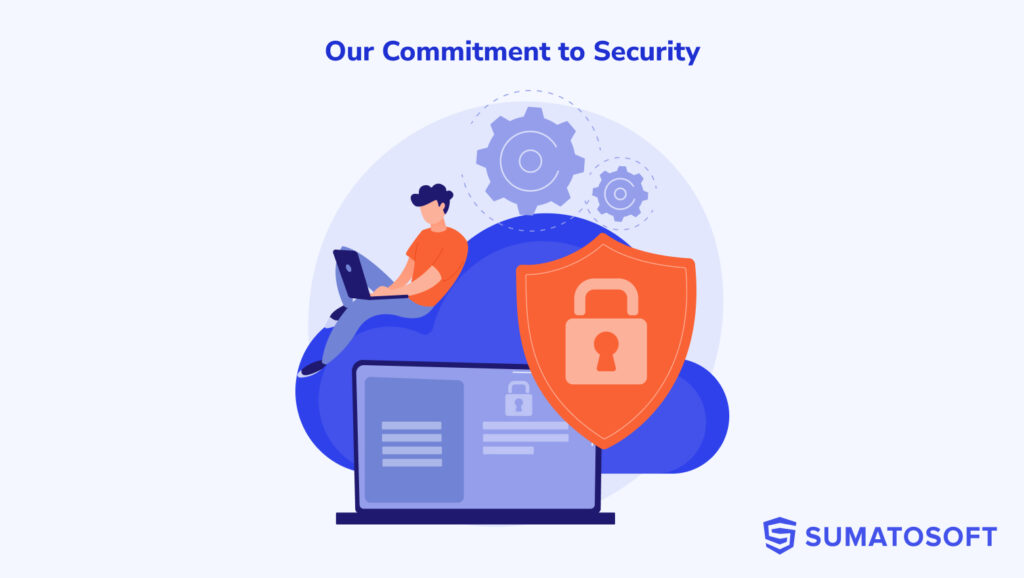SaaS development company
We provide top-notch SaaS development services, develop custom SaaS solutions, and improve existing products.
For 13+ years now we have been responsible for SaaS development and we are proud of it!
SaaS application design services
SaaS development
Our expertise as a top SaaS product development company includes multi-tenant architecture development, service-oriented architecture (SOA) development, modular and scalable design, cloud computing deployments, and API development and integration.
SaaS UX UI design and development
Deliver a seamless and intuitive user experience with our SaaS application development services and UX/UI design services. We prototype SaaS layouts and craft user-friendly, visually appealing, and convenient interfaces, with a strong focus on improving user engagement and enhancing user retention. More engaged users mean more successful business.
SaaS development consulting
Transform your vision into a successful SaaS product with expert consulting. We analyze your business needs, help to conceptualize the solution, provide technical consultancy, define the right architecture, design development strategy, and create a strategic roadmap for development. We can also assist you through the roadmap progression or even handle the SaaS development ourselves.
Migration to SaaS
Seamless transition of your existing software to a cloud-based SaaS model, applying best practices and our internal guidelines to ensure scalability and security. We handle every step, from architecture redesign to data migration and user adaptation, minimizing downtime and guiding users and employees on every step for a smooth transformation.
API development and integration
Enhance your software ecosystem with robust APIs and expand the SaaS solution functionality. We develop new API endpoints, integrate third-party services via existing API, and go the extra mile to ensure your SaaS solution keeps delivering top value to its users.
Cloud-based apps
We design and deploy scalable, high-performance cloud applications that drive efficiency and innovation. Leveraging AWS, Azure, and Google Cloud, our solutions maximize cost-effectiveness, security, and flexibility, ensuring seamless scalability and long-term business growth.
SaaS evolution/upgrade
We keep your SaaS platform ahead of the curve with continuous improvements and feature upgrades. We refine architectures, enhance performance, and implement new functionalities to ensure your solution remains competitive, secure, and aligned with evolving market demands.
Support & Maintenance
When SaaS application development finishes, we ensure team continuity so that the same development team works on the new features and maintains the product. You will be able to scale and descale the SaaS developers team according to your business plans and needs.
Request a Free Consultation
Let’s discuss your SaaS goals and how we can help you achieve them.
Types of SaaS applications we develop
Enterprise resource planning (ERP)
Corporate finance, procurement, supply chain, HR management, production planning.
Productivity and collaboration tools, project management
Task management tools, meeting and online communication tools, time tracking and reporting, team dashboards.
Content management systems (CMS) and web hosting
Web development, blogs, online stores, domain hosting, media management tools.
Human capital management (HCM)
Recruitment, performance tracking, payroll processing, employee benefits administration, time and attendance tracking.
Financial services and fintech
Financial analytics, mobile banking, investment platforms, automated invoicing, automatic fraud detection systems, loan management.
Social networking and communication
Messengers, social media platforms, dating, video conferencing, forums, streaming.
Travel apps
Flight and hotel booking, data aggregation systems, travel assistants, rental car services, local guides.
Health and wellness services
Telehealth, mental wellness, fitness tracking, integration with IoT devices, remote patient monitoring, sleep tracking, pill-taking monitoring systems.
Entertainment apps
Music streaming, video streaming, gaming platforms, podcast apps, audiobook services, digital art platforms.
CRM development
Sales pipeline tracking, customer support, marketing automation, lead management, contact databases, campaign analytics, AI-powered chatbots.
ERP development
Custom complex enterprise systems, finance management solutions, procurement management platforms, multi-location support, business intelligence.
LMS development
Online course platform, employee training systems, gamification, AI-powered chatbots, interactive learning.
EHR development
Electronic health records, telemedicine integration, medical billing, prescription tracking, clinical workflow automation.
Accounting software
Invoicing, payroll, financial reporting, tax management, automated reconciliation, budgeting, multi-currency support.
Data analytics
Business intelligence, AI-powered analytics, predictive analytics, big data processing, visualization tools, data warehousing.
HRM development
Employee records, payroll automation, performance tracking, recruitment management, employee engagement.
Customer service apps
Chatbots, ticketing systems, helpdesk automation, AI-powered customer support, live chat.
Document management
File storage, version control, collaboration tools, digital signing, multiple access permission groups, records retention policies.
Fleet management
Vehicle tracking, route optimization, fuel monitoring, preventive maintenance scheduling, driver performance analysis, compliance tracking, asset utilization.
ITSM development
Incident management, service request tracking, asset management, change management, self-service portals.
Supply chain optimization
Inventory analysis and forecasting, demand planning, logistics automation, supplier relationship management, warehouse management, order tracking, risk assessment.
Vehicle tracking and telematics
GPS tracking, driver behavior monitoring, fleet analytics, route optimization, geofencing, maintenance alerts, fuel efficiency monitoring.
SaaS application development for your industry
Having solid SaaS product design experience, SumatoSoft provides a wide range of SaaS development services for global Clients from various industries.
Media & Entertainment SaaS
Enterprise SaaS
Logistics SaaS
Food Tech SaaS
Education SaaS
Real Estate SaaS
Marketing SaaS
Manufacturing SaaS
eCommerce SaaS
FinTech SaaS
Healthcare SaaS
Insurance SaaS
Unlock Your SaaS Potential
Book a demo to see how we can optimize your product for growth.
Recent works
Media buying system for a leading US-based advertising agency


Graphical user interface for robot operation


Adaptive health monitoring mobile app for personalized wellness programs


Our SaaS products development process
During Discovery phase, our business analysis team helps to analyze, define and write down the value proposition of your SaaS application and its functional core:
- domain and competitors analysis;
- detailed product vision;
- requirements description & prioritization;
- tech stack selection and advice;
- exact project estimation;
- release planning.
Сlean UI and UX is the shortest way to customers’ loyalty. From our experience, we know how users interact with SaaS solutions and use the best practices to create efficient user flows.
- research and analyze;
- information architecture;
- user experience design;
- user interface design.
When designing SaaS product architecture, SumatoSoft’s priority is to ensure high load and easy scalability of the system for the future. We make apps that seamlessly adapt to business growth and expansion:
- single-tenancy and multi-tenancy architectures;
- cloud platforms (AWS (Amazon Web Services), Azure, Google Cloud, etc.) deployment;
- performance optimization;
- data backups & migration;
- service-oriented architecture (SOA) development;
- API development and integration;
- cloud computing deployments.
We follow the comprehensive quality assurance (QA) approach in SaaS development services that includes
- code reviews;
- unit tests;
- performance testing;
- load testing;
- security testing;
- HIPAA/HITECH & GDPR tests.
We ensure a smooth and efficient release, delivering a fully functional SaaS solution with all necessary configurations:
- final performance checks;
- cloud deployment setup;
- CI/CD pipeline implementation;
- user acceptance testing (UAT);
- launch online and in mobile stores.
Post-launch, we provide ongoing support where we support the solution in the issues regarding the technological stack update, security, performance, and user-friendliness:
- performance monitoring & optimization;
- security updates & patches;
- feature enhancements & upgrades;
- bug fixes & troubleshooting;
- user support & documentation updates.
Frontend technologies
Backend development
Cloud & DevOps
Mobile app development
Architecture patterns we apply
The right way to develop architecture is to adjust it to the functional and non-functional requirements of the SaaS solution. We shape the architecture based on these requirements with the help of the following backend and frontend patterns.
Backend patterns
- Multi-tenancy architecture – multiple users share the same database and infrastructure but with data isolation between them.
- Single-tenancy architecture – every user has a dedicated instance of the application with complete data isolation.
- Serverless architecture – a popular pattern, the application runs on cloud platforms and enables automatic scaling and resource allocation.
- Microservices architecture breaks applications into independent, modular services that are convenient for maintenance.
- Command and query responsibility segregation (CQRS) – separates read and write operations for optimized performance.
- Event-driven architecture – uses event triggers to improve responsiveness and real-time processing.
- Domain-driven design (DDD) – that structures software based on real-world business domains rather than technical components.
- Decoupled/headless architecture – enables independent development of the front-end and back-end for flexibility and multi-platform support.
Front-end architectures
- Model-View-Controller (MVC) – separates applications into three layers: logic, UI, and data handling.
- Single-page application (SPA) – loads a single HTML page and dynamically updates the content via APIs.
- Model-View-ViewModel (MVVM) – enhances code organization with the help of the ViewModel layer that synchronizes data between the Model (logic) and View (UI).
- Progressive Web App (PWA) – enables web applications to work offline and deliver a native app-like experience.
- Reactive architecture – ensures real-time responsiveness by processing and updating UI elements dynamically as events occur.
- Micro-frontend architecture – breaks a web application into independently developed and deployed front-end modules.
Our commitment to security
As ISO 27001-certified developers, we put a lot of effort into securing the data at every stage of SaaS development. Our SaaS solutions adhere to all industry-leading standards such as GDPR, HIPAA, SOC 2, and others. Our approach safeguards sensitive data, prevents branches, and ensures regulatory compliance for industries like healthcare, finance, eCommerce, and other high-security industries.
- We implement end-to-end encryption (AES-256, TLS 1.2+) to secure data in transit and at rest.
- Our processes align with GDPR, HIPAA, SOC 2, PCI DSS.
- Role-based access control (RBAC), multi-factor authentication (MFA), and strict identity management prevent unauthorized access.
- We deploy SaaS applications on AWS, Azure, and Google Cloud that allow us to ensure high availability, DDoS protection, and secure cloud storage.
- We run regular security audits to reinforce system defenses.
- We establish automated backups, failover mechanisms, and incident response plans.

Start Your Project Today
Get in touch with our experts to turn your SaaS ideas into a scalable solution.
Advanced tech
Our team consists of senior-level specialists well-versed in modern technologies. We integrate these technologies into SaaS solutions, making them accessible through a subscription model.
Big Data
We help businesses leverage the power of big data by integrating data processing, analysis, and visualization capabilities into SaaS solutions.
Artificial Intelligence (AI)
We incorporate AI-driven algorithms and machine learning models to enhance SaaS platforms, enabling automation, predictive analytics, and intelligent decision-making.
Data Science
Our data science expertise allows businesses to extract meaningful insights from complex unstructured datasets. We develop analytics-driven SaaS solutions that reveal hidden patterns, support data-led strategies, and foster innovation across industries.
Internet of Things (IoT)
We integrate IoT devices and sensors into SaaS platforms, enabling real-time data collection, remote monitoring, and automated workflows.
Business Intelligence (BI)
We incorporate powerful BI tools into our SaaS solutions. Our business intelligence enables businesses to analyze data easily and make informed, data-driven decisions.
Machine Learning (ML)
Machine learning adds an additional helpful layer to SaaS solutions. Our expertise allows us to develop ML-focused SaaS solutions or integrate self-learning algorithms into existing SaaS platforms.
Reasons to outsource SaaS development
Fully managed process
We tackle everything from planning to deployment, avoiding pitfalls and applying best practices that took us years to perfect.
Cost efficiency
Outsourcing eliminates the cost of hiring, training, and maintaining an in-house team while getting high-quality SaaS development services. SaaS software development company tackles everything.
Focus on core business
Outsourcing allows you to delegate the task of developing software solutions to professionals, allowing you to focus on the business rather than the technical aspect of the solution.
Access to advanced tools
We monitor and use the latest technologies, best development methodologies, and advanced tech opportunities in our projects. SaaS application development company provides easy access to all advanced tools.
Reduced risk
From the beginning of our cooperation, we have established risk management practices, monitoring and addressing operational, external, security, and other types of risks.
Engagement models in SaaS development
We offer flexible engagement models tailored to your business needs and project requirements. Whether you need a dedicated development team or a time-and-materials approach, we offer these models for our SaaS development services.
SaaS development outsourcing
We deliver business value by providing end-to-end outsourcing services. Our expert team consists of all necessary specialists for full-edge software development: developers, business analysts, designers, and quality assurance specialists. Our development approach is based on deep industry expertise, transparent collaboration, and a collaborative approach that ensures a faster time-to-market and cost optimization.
Dedicated SaaS developers
We provide skilled SaaS developers who seamlessly integrate into your team, working alongside your existing processes and objectives. Our specialists augment your in-house capabilities with the necessary expertise, bringing technical excellence, scalability, and efficiency to your project.
Launch Your SaaS Success
Start building with us today and see your business thrive in the digital space.
Why SumatoSoft
Professional team
We are ISO 27001 certified software developers that strictly adhere to industry regulations, including GDPR, HIPAA, and PCI DSS.
Our team consists of senior-level developers specialists with vast experience in SaaS development. We carefully select the right experts for each project, ensuring a perfect match between skills, interests, and business needs.
Reduced development costs
We offer fair prices for both parties: you get a well-tested application with easily maintainable code, and we get enough resources to grow as professionals.
Smooth and transparent collaboration
Transparency is at the core of our work. We provide detailed time and budget estimations, regular progress reports, and real-time project tracking through our management tools. Clients always have full visibility into project progress.
Access to advanced technologies
We implement cutting-edge solutions like AI, IoT, machine learning, blockchain, and business intelligence. We bring the power of modern technologies to SaaS solutions, making them accessible through a subscription model.
Diligent project documentation
We maintain detailed project documentation, which includes technical specifications, change logs, quality assurance reports, progress reports, and more.
Preventive cybersecurity approach
As an ISO 27001-certified SaaS development company, we adhere to the highest security standards, implementing strict data protection measures, HIPAA/GDPR compliance, and proactive risk mitigation strategies to safeguard SaaS platforms.
Quick releases every 2–3 weeks
We follow Agile methodologies and CI/CD pipelines to deliver new software every second week. At the end of every iteration, we run demos to showcase the work result and get early feedback.
Quality management controls
We only release software once it meets a percentage of acceptance criteria, which we agreed upon with you in the quality assurance strategy at the beginning of the project. Our rigorous QA process guarantees high-quality SaaS solutions.
Awards & Recognitions
Cost of developing SaaS solutions
The cost of developing a SaaS solution starts at $50K and varies depending mostly on three factors: required functionality, architecture and infrastructure, and security and compliance requirements. We provide a free quote for project cost estimation from the start, carefully considering solution options and offering the best fit in terms of cost, quality, and alignment with your goals.
To provide an estimation, we examine project requirements, explore different solution options, design a high-level architecture, define the scope of work, and finally, our developers and other specialists estimate the development effort.
Core cost factors are:
- Feature set & complexity – advanced functionalities, AI-driven analytics, and integrations increase development time and cost.
- Architecture & infrastructure – cloud hosting, multi-tenancy, and data processing requirements require more development efforts.
- Compliance & security – compliance with industry regulations like GDPR, HIPAA, and SOC 2 add to the development scope.

Best practices we use for SaaS development
Core challenges for any SaaS solution are scalability, security, user retention, and performance. We addressed these challenges using proven best practices.
Scalable architecture
We design scalable architectures that can handle increased user demand. We achieve this with the help of cloud-native infrastructure (AWS, Azure), a microservices approach, the use of automated scaling mechanisms like load balancing and database sharding, and the choice of the right tenant model.
Security and compliance are our priorities
We apply end-to-end encryption, use role-based access control, run regular security audits and penetration testing, and apply our expertise as IOS 27001:2022-certified providers, ensuring compliance with GDPR, HIPAA, SOC2, PCI DSS, and other regulatory requirements.
Focus on user experience (UX)
Great UX keeps users engaged, and we know how to achieve that. We create user-centered designs based on extensive research, including user analysis, persona development, customer journey mapping, app user flow creation, and competitor analysis, ensuring your SaaS solution stands out.
Agile development
The Agile approach offers a fast, adaptive development process with continuous improvement. We leverage its advantages, including iterative releases, continuous feedback loops, test-driven development, and CI/CD pipelines.
Continuous performance monitoring and optimization
SaaS applications must operate flawlessly 24/7. We use proactive monitoring and optimization techniques to detect bottlenecks before they impact users and automate incident response to prevent downtime. We also conduct load and stress testing to ensure the system can handle peak usage and utilize tools like New Relic, Prometheus, and AWS CloudWatch to monitor application health.
Get started
Let’s start
If you have any questions, email us info@sumatosoft.com

Frequently asked questions
How long does it take to develop a custom SaaS product?
The development time mostly depends on the project’s complexity. A Minimum Viable Product (MVP) typically takes 3–6 months, while a full-scale SaaS solution may take 6–12 months or more.
Do you build software in compliance with the GDPR, HIPAA, and other international standards?
Yes. We develop SaaS solutions that comply with GDPR, HIPAA, SOC 2, ISO 27001, PCI DSS, and other regulations.
Will we sign an NDA before starting cooperation?
Yes, we sign an NDA (Non-Disclosure Agreement) before discussing any project details. Your data is protected from day one.
How much does it cost to hire a developer for our project? What kind of pricing do you offer?
The cost depends on the developer’s expertise, location, and technology stack. The average outsourcing rate in North America starts at $71 per hour, in Europe around $55 per hour, and in Eastern Europe approximately $40 per hour. We offer two pricing models: fixed price, where the total project cost is pre-defined, and time & material, where the final cost is based on the hourly rate and actual time spent.
How much does it cost to develop Software as a Service (SaaS)?
SaaS development starts at $50K, with costs varying based on features, architecture, security, developers location, and integrations. We provide a detailed free cost estimate after the intro call. Contact us!














